
Christopher Hector talks to the world number one…
Photos – Stefano Grasso/CHI Al Shaqab
Where-ever the world’s top showjumping riders and horses compete, you are likely to find them competing over a course designed, and fences built, by Frank Rothenberger. It was good to catch up with Frank at the CHI Al Shaqab in Doha.
I’m sure there are lots of young men who grow up dreaming that they are going to be a famous showjumper like Ludger Beerbaum, but I am not sure many dream of being a famous course designer like Frank Rothenberger… how did you get started?
“I was building courses when I was only sixteen years old. I had my own jumping field and I produced jumps for myself because there was no place where we could buy jumps – so my father said, okay, go to the carpenter and build some jumps yourself. I built some jumps for my own use. Then riders came to my place for training because I had water jumps and ditches, hedges and walls, banks and gates and everything. I had to keep changing the course for them, so I became a course designer when I stopped jumping.”
When did you stop?
“I started my company when I was 22, and I stopped riding because I had so much work. My plan was to re-start again, but then I started course designing, more or less professional, and found out that maybe I was a better course designer than a rider.”
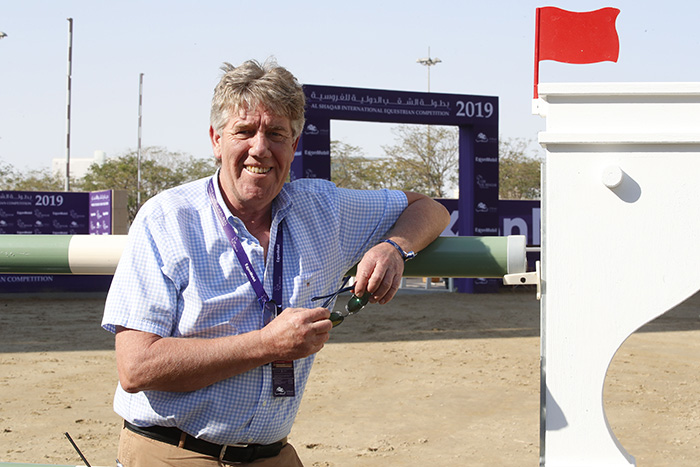
What was the first Grand Prix track that you designed?
“I started as a normal local national course designer when I was twenty two. I think I was thirty one or thirty two when I did my first international seminar, and then I did one big show after another, so it became better and better.”
Were there any course designers at the time that you looked at their work and thought ‘that’s how I want to design…’
“I started working with Olaf Petersen when I was twenty two and I worked as his assistant for a couple of years, then I found my own route, way to design courses. At that time Olaf was number one in the world and we did many big shows together, the first WEG in Stockholm, the 88 Olympic Games, a couple of European championships, World Cup finals, lots of big shows. As well as that I started my own career and did my own shows.”
“I learned a lot from Olaf so it is also a little bit of his hand-writing that goes into my courses.”
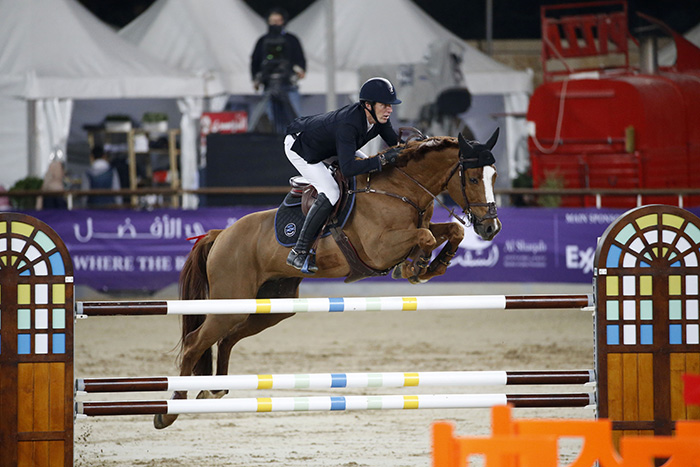
One of the distinctive features of Frank’s fences is his sensitivity to the culture of the
country in which the event is being held. Here Kevin Staut and Viking d’lRousserie tackled a fence that celebrates Doha’s famous doors…
What’s your hand-writing?
“I don’t know, I cannot judge myself, you must ask the riders, but for me it was always important to get nice lines, rhythmical lines, flowing courses, not too hard turns – not too hard on the horse. That was very important for me.”

Qatari local, Bassem Hassan Mohammed and Gunder
over another of Frank’s fences, the wing closest to us is a replica of the Fanar, an Islamic Cultural Centre that we drive past every day to get back to the hotel – and yes, you can walk up the spiral.
Has your designing changed much over the years now that we are getting more Thoroughbred type horses?
“Everybody develops and improves. What I never do, I never look back to my old courses and build them again. Okay with indoor arenas because you don’t have a lot of possibilities with indoor arenas, some are 30 by 70 metres, and then if you have a good track you can repeat it, two, three, four years later. For me the greatest challenges are the great big outdoor arenas, like Aachen or Hamburg.”

France’s Simon Delestre and Zimequest
This is a magnificent arena here in Doha…
“The arena here is about 10,000 square metres and it is a really big field, but the infrastructure here is unbelievable, the stabling, the showgrounds, the indoor arena, the stands, everything is perfect and well-prepared for top international shows.”
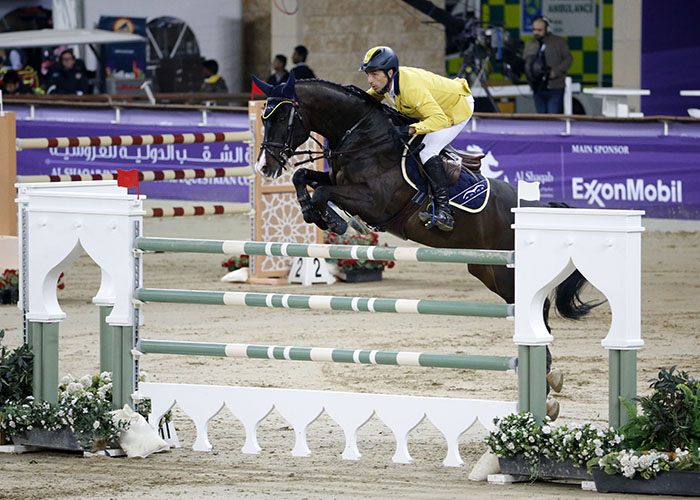
Brasil’s Yuri Mansur and Carlson
You build the same here as you build in Europe?
“Of course – we have the top riders here, it doesn’t matter where they jump. Two weeks ago I was in Hong Kong, I go to New York in three or four weeks, and we have the top riders all around the world, it doesn’t matter, everywhere we have the top riders and the top horses.”
My friend George Morris always says, oh they have pussified the courses, they’ve got rid of the hedges and banks and big open waters, the rustic obstacles that challenge the riders – is this fair criticism?
“Yes it is, and I am absolutely with him. I know George likes to get some of these older jumps involved and this for me is very important, we don’t want to bore the horses, so we need sometimes a bush oxer, we need an open water jump, not as many times as we had before because now we have so many big shows – a horse cannot jump an open water jump every week. But in the big classes and the championships, we need this type of jump, we need skinny jumps and nice walls and dry ditches – but the riders are not too used to jumping these fences any more. For me it is an absolute must that we always have different types of jumps in the arena.”
But is the pressure on you – there are riders coming into the sport on very expensive horses who are not such experienced riders – is there pressure to build simpler, easier fences and tracks?
“There are new riders, younger riders, but the new riders are very well educated. Twenty five years ago there were good horses, but the management around these riders was not so good, now they have good management, good trainers, they have super trucks, they have super grooms, they have good vets and super management, and they are riding very well.”
Does it ever worry you that the sport has become so much about so much money…
“It’s nice if money is involved in the sport, it means we get good facilities, good conditions, super footings, the surfaces are very good. We have nice jumps and we can educate young course designers and that helps a lot.”
So you aim to build tracks that will encourage the horses and help them grow?
“Absolutely. For me, up to one metre forty is educating horses and riders and then from one metre forty five to one metre sixty we ask them questions to test that education.”
Is there any course, any competition that really stands out in your memory?
“At the 2006 WEG with the final 25 at Aachen, that was one of my best courses I think I ever built. We had 25 riders, and except for one, they all had jumps down for a top result, for me that was one of my best courses. We had the wall, we had open water, with a dry ditch, with a liverpool, a narrow gate, a bush oxer, we had a white oxer, a triple bar, we had a plank on top, we had all kinds of different jumps that I built for this class. That was to me, one of the nicest courses.”
Do you have any surprises for the riders here this weekend?
“Not surprises, we try to build nice flowing courses, they must be challenging of course but it is always very easy to over-do it at this level. Sometimes it is a little bit too tough, sometimes a little bit too small, fifteen, sixteen clear rounds, if it is too tough, just one or two, it becomes very difficult to build just at the right level. It was much easier twenty five years ago – then you had 40 riders, ten or twelve could win the class, now out of 50, 30 can win the class. The education is very good and the level is very high.”
Christopher Hector was flown to Doha by Al Shaqab, organizers of CHI Al Shaqab, and thanks them for their hospitality and the team in the press room for all their assistance…
Below – a selection of Roz Neave’s photos from Frank’s most memorable show,
Aachen WEG 2006

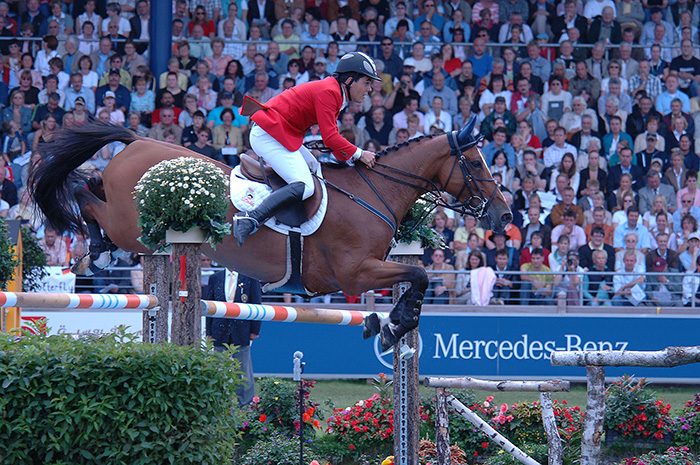
Spain’s Sergio Alvarez Moya with Le Reve de Nabab
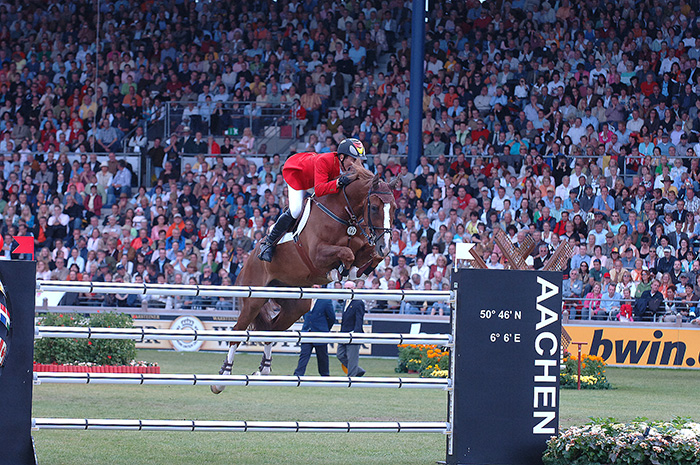
Ludger Beerbaum and L’Espoir
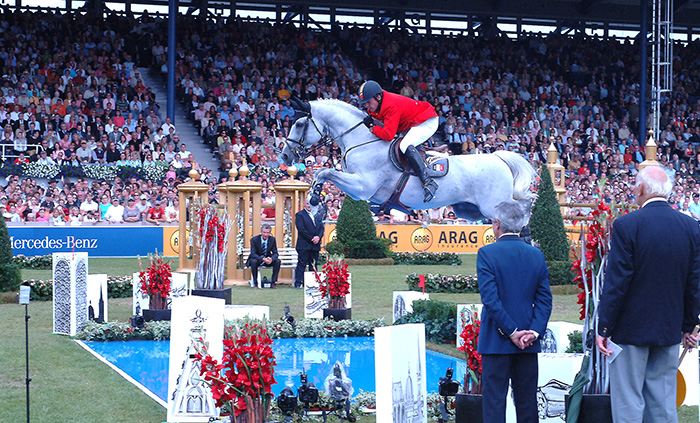
Parco and Ludo Philippaerts
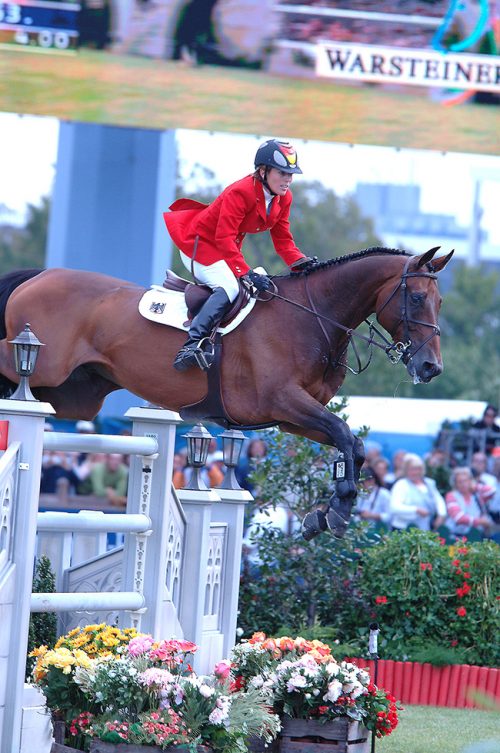
Shutterfly and Meredith Michaels-Beerbaum
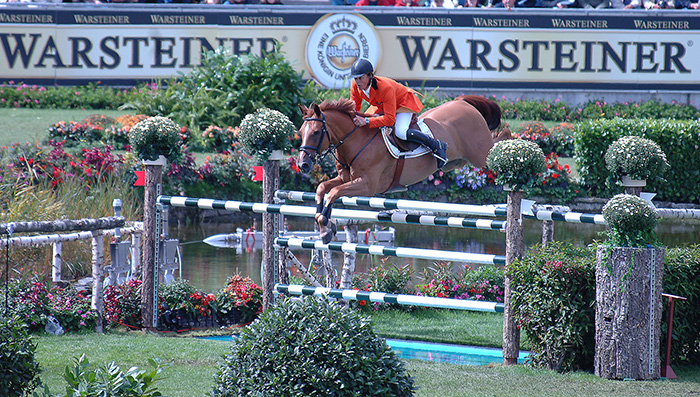
Jeroen Dubbeldam and Up and Down
and the star of the show, Cumano and Jos Lansink
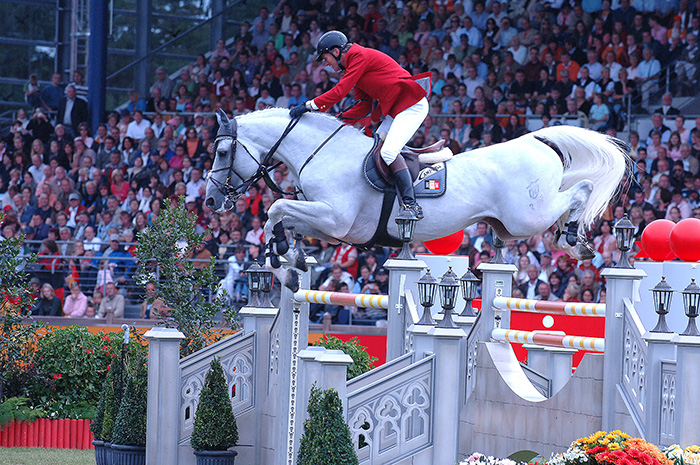



Is Frank Rothenberger connected to the now world wide Global Competition which is shown on Fox